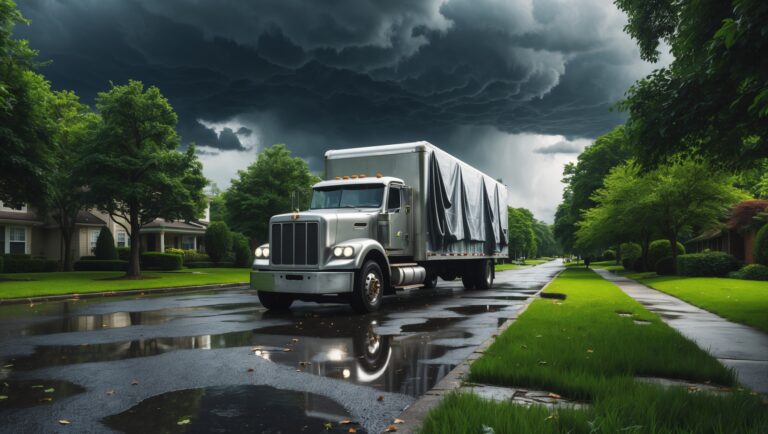Self-Storage Facility Safety: A Comprehensive Inspection Checklist for Owners
Introduction
Operating a self-storage facility comes with a unique set of responsibilities, especially when it comes to safety. Facility owners must proactively manage risks to protect both their customers’ belongings and their business from liability. A comprehensive safety inspection checklist is not just helpful—it’s essential for maintaining high standards, ensuring compliance with regulations, and sustaining a trustworthy reputation. Whether you’re a seasoned operator or new to the industry, understanding exactly what to inspect, how frequently, and why these details matter can mean the difference between smooth daily operations and costly, disruptive incidents. In this guide, we’ll provide a step-by-step safety inspection checklist tailored specifically for self-storage facility owners. We’ll cover vital areas such as security systems, fire prevention, structural integrity, emergency preparedness, and more. Our goal is to equip you with an actionable, detailed resource that helps you foster a safe environment, keep your facility in top condition, and reduce potential risks from the ground up.
Why Regular Safety Inspections Matter
Protecting Customers and Assets
Your customers trust you to safeguard their valuable possessions. Routine safety inspections help you identify vulnerabilities before they turn into bigger problems, providing peace of mind to both you and your tenants.
Reducing Legal Liability
Negligence in addressing safety hazards can open the door to lawsuits. A thorough, documented inspection protocol can demonstrate due diligence and potentially protect you in legal disputes.
Meeting Regulatory Requirements
Local fire codes, safety ordinances, and insurance policies often require specific safety measures and regular checks. Keeping up with these requirements ensures your facility remains compliant and avoids fines or shutdowns.
How to Structure Your Inspection Routine
Frequency of Inspections
- Daily: Basic walk-through for obvious hazards, security breaches, and weather-related issues
- Weekly: More detailed inspection of high-traffic and high-risk areas
- Monthly: Comprehensive check of all systems, structures, and grounds
- Seasonal: Special focus on weather-specific vulnerabilities (e.g., winterizing, storm preparation)
- Annually: Full-scale review with external professionals if needed (fire marshal, security consultant, etc.)
Documentation
Use digital checklists or inspection apps to log findings, schedule follow-ups, and maintain records for compliance and liability protection.
Comprehensive Safety Inspection Checklist
I. Perimeter and Grounds
- Check perimeter fencing for gaps, damage, or signs of tampering
- Inspect gates: test locks, electronic access systems, and closing mechanisms
- Ensure all exterior lighting is operational, especially around entrances and dark corners
- Clear landscaping and debris to maintain visibility and access for emergency vehicles
- Look for trip hazards on walkways, parking lots, and driveways (cracks, uneven surfaces)
II. Security Systems
- Test all surveillance cameras for functionality and coverage; review footage storage protocols
- Inspect alarm systems (motion detectors, door contacts, glass break sensors)
- Review keypad entry logs for unusual activity or unauthorized access attempts
- Check individual unit locks and hasps for wear, rust, or tampering
- Verify signage is visible and up-to-date (security warnings, emergency contact info)
III. Fire Safety
- Test all fire alarms, smoke detectors, and heat sensors
- Inspect fire extinguishers for proper charge, accessibility, and up-to-date inspection tags
- Ensure fire sprinkler systems are free of obstructions and have been professionally inspected
- Check emergency exit routes and doors for clear access and proper signage
- Review storage unit contents (where possible) for prohibited or hazardous materials
IV. Structural Integrity
- Inspect roofs for leaks, missing shingles, or pooling water
- Check gutters and downspouts for blockages and secure attachment
- Look for cracks, water damage, or signs of pest intrusion on walls and foundations
- Test roll-up doors for smooth operation and proper seals
- Examine interior and exterior paint for peeling, rust, or mold growth
V. Environmental Hazards
- Test for mold and mildew in units, hallways, and climate-controlled areas
- Monitor for pest infestations: rodents, insects, birds, etc.
- Check HVAC systems for clean filters, leaks, and proper operation
- Inspect drainage systems for clogs or standing water after rain
VI. Emergency Preparedness
- Ensure all staff know emergency procedures and evacuation plans
- Check that emergency lighting and backup power systems are functional
- Confirm first aid kits are stocked and accessible
- Practice emergency drills with staff at least annually
- Keep updated contact lists for emergency services and key personnel
VII. Office and Common Areas
- Inspect customer waiting areas and restrooms for cleanliness and safety hazards
- Check office security: data protection, cash handling, and secure entry
- Ensure ADA compliance: ramps, handrails, and accessible pathways
- Review posted policies, contracts, and emergency info for clarity and visibility
VIII. Special Considerations for Climate-Controlled Facilities
- Test temperature and humidity controls for accuracy and reliability
- Check insulation and seals on doors and windows
- Look for condensation or water leaks that could damage stored goods
Best Practices for Effective Inspections
Involve Your Team
Train your staff on what to look for during their shifts. Empowering employees to report hazards immediately can dramatically improve response times and safety outcomes.
Leverage Technology
Consider using inspection management software or mobile apps to streamline record-keeping, assign tasks, and track resolution of issues over time.
Stay Informed About Regulations
Local, state, and federal regulations can change. Stay connected with industry associations and your local fire marshal to ensure you’re always up to date.
Schedule Third-Party Inspections
Bring in licensed professionals periodically for fire, electrical, pest, and security assessments. Their expertise can catch issues that might be overlooked internally.
Common Inspection Pitfalls to Avoid
- Skipping Documentation: Without proper records, you can’t prove due diligence or track recurring problems.
- Neglecting Less Obvious Areas: Utility closets, roof spaces, and remote corners can harbor hazards.
- Relying Solely on Visual Checks: Some issues, like electrical faults or gas leaks, require professional testing equipment.
- Ignoring Seasonal Changes: Weather events can quickly create new safety risks, so adapt your checklist accordingly.
Sample Inspection Schedule Template
- Monday: Inspect all exterior lighting and gate systems
- Wednesday: Check fire extinguishers, alarms, and emergency exits
- Friday: Review surveillance footage and test camera systems
- First of the Month: Complete a full walk-through of all units and common areas
- Quarterly: Hire pest control and HVAC professionals for facility-wide inspections
- Annually: Schedule fire marshal and security consultant assessments
Conclusion
Maintaining a safe self-storage facility is an ongoing, proactive process that goes far beyond a quick visual scan. By implementing a comprehensive inspection checklist and adhering to a regular schedule, you protect your customers’ property, your staff, and your business from avoidable risks. Safety inspections also demonstrate professionalism, foster trust with tenants, and keep you prepared for emergencies or regulatory reviews. Remember that safety standards evolve, and so should your inspection protocols. Invest in staff training, leverage technology to streamline your processes, and don’t hesitate to consult with external experts when needed. These investments pay off in reduced liability, improved reputation, and operational peace of mind. Ultimately, a safe facility is a successful facility—one where customers feel confident storing their most valued possessions, and where owners can focus on growing their business rather than managing crises. Start with this checklist, tailor it to your unique facility, and make safety a cornerstone of your daily operations.






